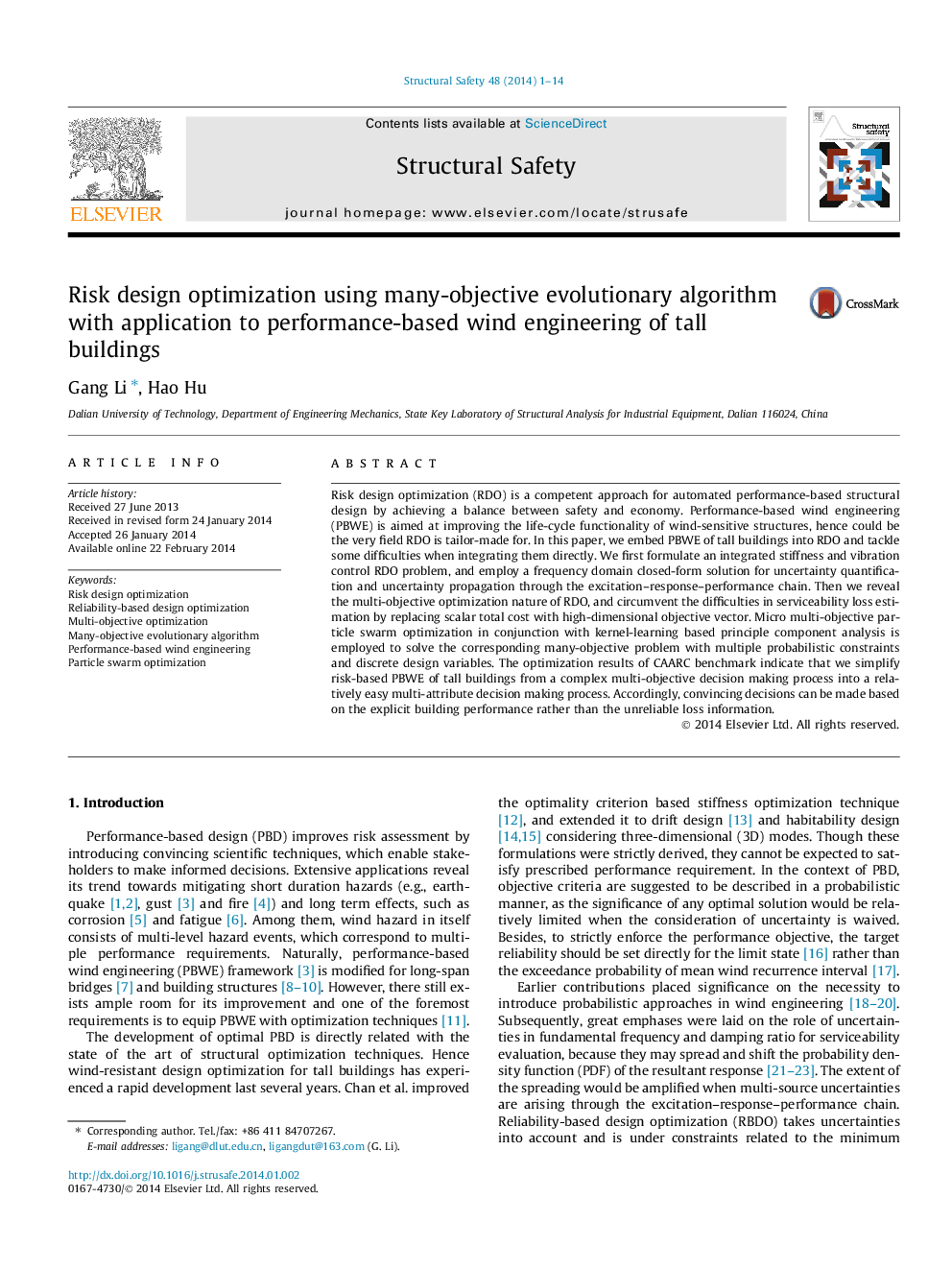| کد مقاله | کد نشریه | سال انتشار | مقاله انگلیسی | نسخه تمام متن |
|---|---|---|---|---|
| 307554 | 513376 | 2014 | 14 صفحه PDF | دانلود رایگان |
• Stiffness and vibration control risk optimization for the PBWE of tall buildings.
• Closed-form solution is employed for uncertainty quantification and propagation.
• There is consistency between risk design optimization and many-objective RBDO.
• Evolutionary many-objective optimization strategy for risk design optimization.
• Micro-MOPSO aided with PCA is proposed to solve the many-objective RBDO problem.
Risk design optimization (RDO) is a competent approach for automated performance-based structural design by achieving a balance between safety and economy. Performance-based wind engineering (PBWE) is aimed at improving the life-cycle functionality of wind-sensitive structures, hence could be the very field RDO is tailor-made for. In this paper, we embed PBWE of tall buildings into RDO and tackle some difficulties when integrating them directly. We first formulate an integrated stiffness and vibration control RDO problem, and employ a frequency domain closed-form solution for uncertainty quantification and uncertainty propagation through the excitation–response–performance chain. Then we reveal the multi-objective optimization nature of RDO, and circumvent the difficulties in serviceability loss estimation by replacing scalar total cost with high-dimensional objective vector. Micro multi-objective particle swarm optimization in conjunction with kernel-learning based principle component analysis is employed to solve the corresponding many-objective problem with multiple probabilistic constraints and discrete design variables. The optimization results of CAARC benchmark indicate that we simplify risk-based PBWE of tall buildings from a complex multi-objective decision making process into a relatively easy multi-attribute decision making process. Accordingly, convincing decisions can be made based on the explicit building performance rather than the unreliable loss information.
Journal: Structural Safety - Volume 48, May 2014, Pages 1–14
